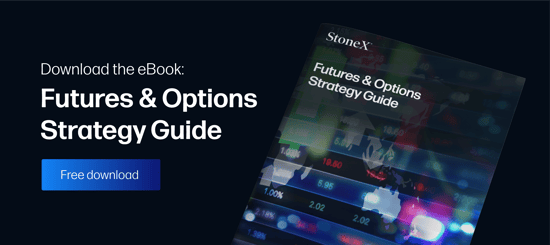Just as it’s important for grain traders to watch a WASDE report, it is equally important for oil and gas traders to watch the release of an energy report. There are two weekly reports about the amount of crude oil inventory in the United States: the EIA Weekly Petroleum Status Report and the API Weekly Statistical Bulletin. These announcements are for producers, refineries, wholesalers, and other industry professionals to be aware of the current stockpiles in the country. Oil traders and market analysts closely watch these updates and use them to predict which direction WTI crude oil and other crude products, like RBOB Gasoline, will move in. Since commodity prices are solely changed by the factors of supply and demand, these announcements are able to shift prices in a volatile move for a short duration of the trading session. This outline will define what these two reports show and why there can sometimes be large discrepancies in the total stock number. The takeaways are to understand the reason for these reports, in which ways these organizations differ, and why they are important to consider when trading in the energy markets.
EIA stands for the Energy Information Administration, which is a principal government agency in the United States. They are responsible for collecting, analyzing, and distributing energy information to support policy-making, efficient energy markets, and improve understanding of energy in the public. The EIA Weekly Petroleum Status Report is published Wednesday at 9:30 a.m. CT. It shows a weekly measure of the change in the number of barrels in stock of crude oil. API stands for the American Petroleum Institute, which is a trade association for the oil and natural gas industry. There are 650 corporations in the organization that are involved in different aspects of the energy sector. The purpose of this association is aligned with the goals of the EIA in promoting public policy to support the energy industry. The API Weekly Statistical Bulletin is published on Tuesday at 3:30 p.m. CT. This weekly bulletin reports total U.S. and regional crude inventories and data related to refinery operations.
Most people expect these two petroleum inventory reports to be very similar if not the same each week. Unfortunately, there are usually discrepancies in these final numbers. One of the main reasons for these differences is how they are reported. Since the EIA is a federally-owned government organization, its survey is mandatory and enforced by law. The EIA includes a “stern disclosure for noncompliance or intentional wrongdoing”. Oil companies can be charged with civil and criminal penalties for failing to accurately report their data. The API, on the other hand, surveys U.S. oil companies voluntarily, meaning they report to the API on an “at-will” basis. Still, API claims to have a very high participation rate from these companies. They receive an average coverage of about 90%.
Most traders choose to follow the EIA storage report more closely than the API report. Since the EIA is government-regulated, more people trust their stockpile numbers. This does not give a reason for traders to ignore the API numbers when they are released. Over the years, the two reports have shown a good relationship by having directionally aligned data around 80% of the time. For this reason, many traders choose to look at the API announcement as a prelude to the more trusted EIA report. It should also be noted that although the EIA is preferred today, this has only been for a number of years. The API data has been around since 1929 while the EIA data has only been available since 1979.
Oil traders watch for these announcements on Tuesdays and Wednesdays for several different trading reasons. Oil companies consider the numbers that are reported to hedge their current and future oil production. Long-term and swing traders look at these numbers to decide if it is better to be long or short depending on the increase or decline in oil stockpiles. Day traders and scalpers, on the other hand, will look for unfair prices to jump in on the movement and ride out the news. By doing this, short-term traders can trade-off of an announcement that sends the market into a very volatile shift. If they are able to get in on the correct direction, they could be able to take a profit for a quick few hundred dollars per contract in a matter of minutes. At the same time, it is equally possible for a trader to jump into the market and end up losing a lot more than one expected on such a short trade.
There are two distinctions that should also be noted about the crude oil stockpiles: there is a draw season and a build season. Typically, winter months are seen as a time for crude inventory to build or increase. Summer months are distinguished as drawdown months and are well-known for being the peak driving period in the United States. For this reason, the seasonality of crude oil prices is considered when trading futures. Crude oil prices usually rise in the summer months (June, July, and August) because of high demand. Consequently, the stockpiles tend to decrease or draw down. This market frequently is seen at its peak towards September and October. As it gets colder outside across the United States, oil demand decreases. In the Winter months (December, January, and February), prices will seem to bottom out and stockpiles will have increased. This cycle is continuous but is never exactly the same. It should be noted that these specific market characteristics are not always accurate but are what usually tend to occur. One major factor that determines how accurate these market assumptions are is the weather.
The above information shows how the EIA Weekly Petroleum Status Report and the API Weekly Statistical Bulletin are interpreted. In summer months, where a draw is expected, if the numbers report a smaller decrease than expected or even a build then this information is perceived as bearish news. On the other hand, if there is a smaller amount of increase in inventory or a draw during winter months then it will be seen as bearish sentiment. On both sides of this spectrum, traders and analysts are bullish when the common seasonality expectations are confirmed. When expectations are denied to be true it causes uncertainty and bears can be found shorting the market.



